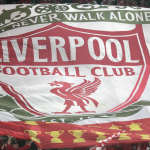FOR some time now, Ainsley Maitland-Niles has been talked about as player of considerable potential. From back when Arsene Wenger handed him his debut as a callow 17-year-old in 2014, fans have been intrigued by his development. That intrigue grew into excitement after an impressive loan spell with Ipswich Town in 2015/16, and ever since he has been one of the great hopes of the Arsenal academy. However, in his last couple of outings, Maitland-Niles has looked like more than a good prospect for the future—he’s looked like someone capable of making a significant contribution in the present.
Against Manchester United and Rennes, Maitland-Niles was employed as a right wing-back. It’s a position he has limited experience in, but one that has proved crucial to Unai Emery’s tactical plan in both games. The decision to play him there is effectively one enforced by Hector Bellerin’s knee injury. Bellerin’s athletic, box-to-box sprinting had become instrumental to Arsenal’s approach—and none of the potential alternatives was capable of mimicking that style.
Maitland-Niles on Bellerin: "Hector is a fantastic player and I wouldn't want to force anybody out of the team, it's more about healthy competition with him." #AFC #Arsenal pic.twitter.com/R0qjTdBtD9
— AFCMike (@AFCPW) March 17, 2019
Stephan Lichtsteiner didn’t have the legs; Carl Jenkinson didn’t have technical pedigree. As for Shkodran Mustafi, he struggles enough in what is ostensibly his best position at centre-half. This season, Maitland-Niles has been a man for all positions, and his name was next in line to take over as Bellerin’s back-up.
Some of Maitland-Niles’ most vocal supporters have taken umbrage at the fact he’s been regularly played “out of position”. In their opinion Maitland-Niles is, and should remain, a central midfielder. They question what is to be gained from fielding him in a different role.
Perhaps the question ought to be whether Maitland-Niles is likely to get many opportunities as a central midfielder at Arsenal. More gifted players than him, the likes of Tomas Rosicky and Santi Cazorla, were forced to take up positions on the flanks for long periods despite their preference to play in the centre.
There’s nothing wrong with versatility; no shame in being a utility player. Look at the career Danny Welbeck has achieved at club and international level, in large part down to his capacity to flourish in a number of different positions. Victor Moses was a middling midfielder who couldn’t hold down a regular place at Chelsea—after a surprise switch to wing-back, he became a Premier League champion.
None of this is to exclude the possibility that Maitland-Niles will eventually revert to the middle of the park. There is plenty of time for that yet. But in the meantime, this is his best chance of getting regular first-team football—and consequently his best chance to progress.
Academy players need to embrace whatever first-team role they’re given—and right now, Maitland-Niles is doing that. Against United and Rennes, he looked every inch a wing-back. He has the sprinting speed that is so prized at both ends of the pitch—it enables him to both break the offside trap and catch the most fleet-footed wingers. His time spent playing as a winger, largely with Ipswich, has equipped him with impressive dribbling and crossing ability. He’s even shown a nose for goal, nodding home in the Europa League after what’s becoming a trademark late run.
It was a series of injuries that gave Bellerin his shot at the first-team back in 2014/15. When the campaign began, he was the fourth choice right-back, but he stepped up when required. It’s also worth remembering that for the majority of his teens, Bellerin was intended to be a winger. Professional football is so often about taking the opportunities presented to you. Maitland-Niles is showing signs he may be more than capable of doing that.
A £10 bet on Arsenal to make the top four returns £15.70




